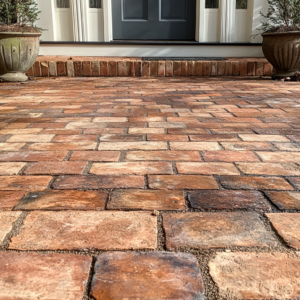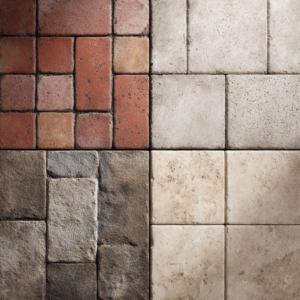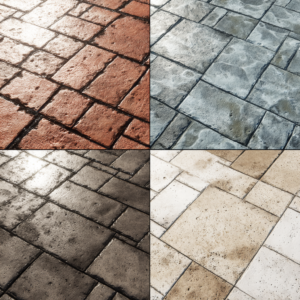For many years, pavers and flagstones have been protagonists of a constant “duel” when it comes to patios, driveways, walkways, etc. Both products have different features and stand out in their way. But price-wise, is flagstone cheaper than pavers?
Many aspects come into play when you’re calculating prices. Maintenance costs, durability, and quality are critical points to consider when choosing the product you’ll use in your project. So in this article, we will go deeper into this topic and clarify some of the most frequent questions about this subject.

Jump to:
Is Flagstone Cheaper Than Pavers?
On average, yes, flagstone costs around $2 to $3 per square foot while pavers range from $3 to $6. However, in the end, a flagstone flooring project costs more than pavers. The overall material costs a bit more, and the labor to install it is pricier too.
Flagstone itself exists in numerous types, for example, sandstone, quartzite, bluestone, and limestone. Some materials are more accessible than others, and this can change from one region to another.
Thus, value ranges considerably, with quartzite being the most expensive (it costs about $575 per ton) and limestone the cheapest (from $80 to $100 per ton).
Besides, flagstones generally come in larger units, and depending on your design, that involves a lot of cutting. For example, you can expect your project budget to rise considerably for a narrower walkway installation; Because you have to cut more pieces.
On the other hand, in patios, it’s possible to use whole units, much larger, and each piece will cover a much broader area; Resulting in a lower labor cost.
Differences between flagstone and concrete pavers
But knowing the difference in prices between flagstone and concrete pavers is just the beginning. The choice is not only about price, it is important to know what each material brings to the table and whether they fit your project or not.
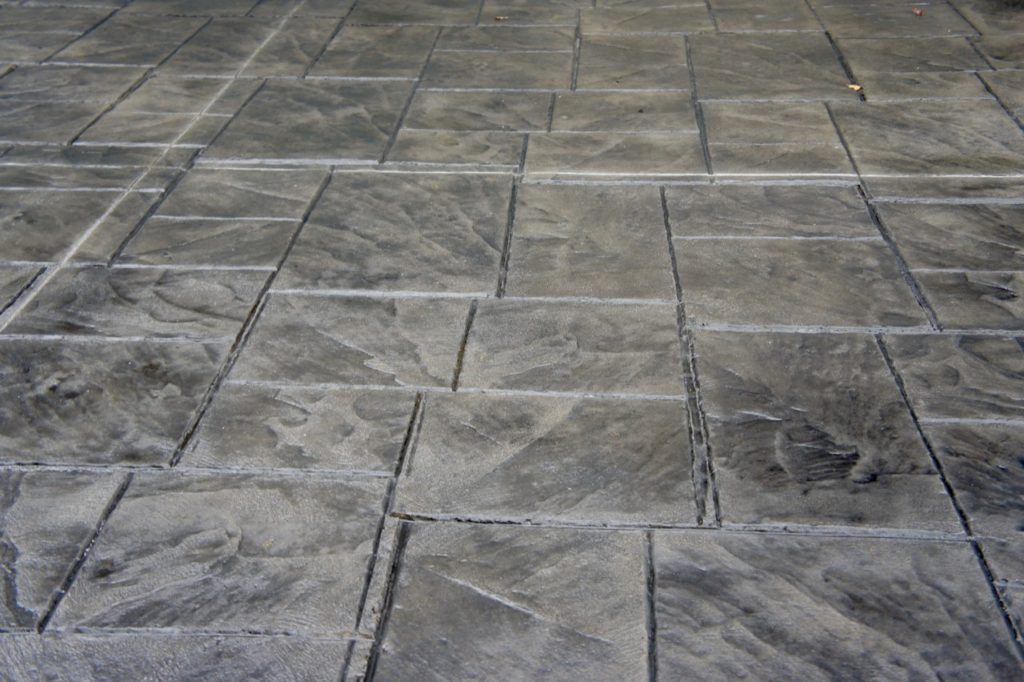
appearance is the first big difference. Flagstone provides a natural and rustic look. Its irregular shapes and varied colors create a unique and organic aesthetic. The surface may have natural clefts and textures, adding to its visual appeal.
On the other hand, concrete pavers have a more uniform and consistent appearance, coming in a variety of shapes, sizes, and colors, and providing a wide range of design options. Some concrete pavers are made to mimic the look of natural stone or other materials.
As far as the installation goes, flagstone can be more labor-intensive due to the irregular shapes and thicknesses.
It often requires a skilled installer who can fit the pieces together in an aesthetically pleasing and stable manner. Mortar or gravel may be used as a base, and joints are typically filled with mortar or sand.
That said, concrete pavers are designed to interlock easily – thus simplifying the installation process. They are often laid on a base of sand or gravel, and their uniform shapes facilitate quick and straightforward placement. The interlocking design helps create a stable surface.
Moving on to durability, flagstone is generally durable and can withstand weathering over time. However, some types of flagstone may require periodic sealing to protect against staining and erosion.
Concrete pavers are durable and resistant to weathering. They tend to be more resistant to stains than some types of natural stone. Additionally, individual pavers can be easily replaced if damaged.
Both flagstone and concrete pavers have their advantages and can be suitable for different aesthetic preferences and project requirements. So the choice between them often depends on factors such as budget, desired appearance, and the complexity of the installation.
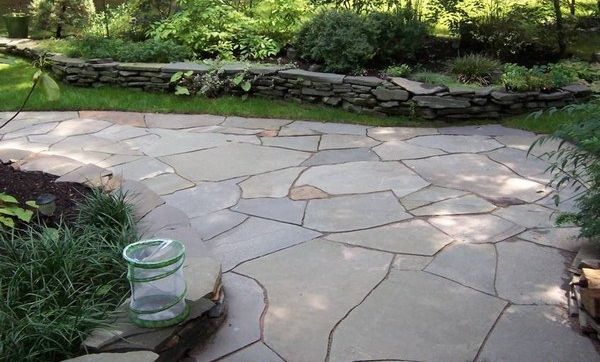
How Long Will A Flagstone Patio Last?
Now you have a better idea of the answer to the question “Is flagstone cheaper than pavers?”, but how long does flagstone last?
Both materials, flagstone, and pavers, are remarkably durable, lasting up to 10 years under normal conditions. However, for flagstones to last this long, their depth must be suitable for the location where you’re installing them.
Unlike pavers, which frequently have about 3- to 3 1/2-inches, flagstones are generally thinner. The product is usually between 1/2 and 1 inch thick. Even though it’s an extremely durable and resistant material, still, in some situations, it may not be enough.
Also, if installed on driveways, flagstones will always be susceptible to break if compared to pavers. The product can’t take the heavyweight so well.
However, if quality material and you install it correctly, flagstones offer a great deal of personalization. And while not ideal for driveways, they look great on patios and walkways.
The downside of flagstones is that they usually come in larger pieces (and sometimes different shapes). If one of the stones breaks, they’re heavier than pavers and will demand a little bit of effort from you.
But the task itself is somewhat simple. Just remove the stone, clean the bed, apply your mortar, and reattach it.
Do You Need To Seal Flagstone Patios?
Yes, while not structurally necessary, you should always consider sealing your paver or flagstone patio.
Just like any other surfaces, especially outdoors, flagstone patios are subject to wear off; By exposure to severe weather conditions, and stains, among others. And one of the best ways to protect your investment is by sealing it after installation.
The substance not only helps to protect against the above but also hinders weed growth between joints, protecting them against mold and moss.
We recommend you reapply a sealer every 3 to 5 years. The exact time may vary according to wear.
Is Cleaning Flagstone Easier Than Pavers?
Both require very similar care. You have to sweep it regularly to keep loose dirt, landscaping debris, sand, and other substances from sitting over the flagstone for extended periods.
Fall leaves can hold moisture, which could lead to stains if you allow them to sit for too long. In the winter, you must clear snow as soon as possible to prevent moisture and ice from getting into joints.
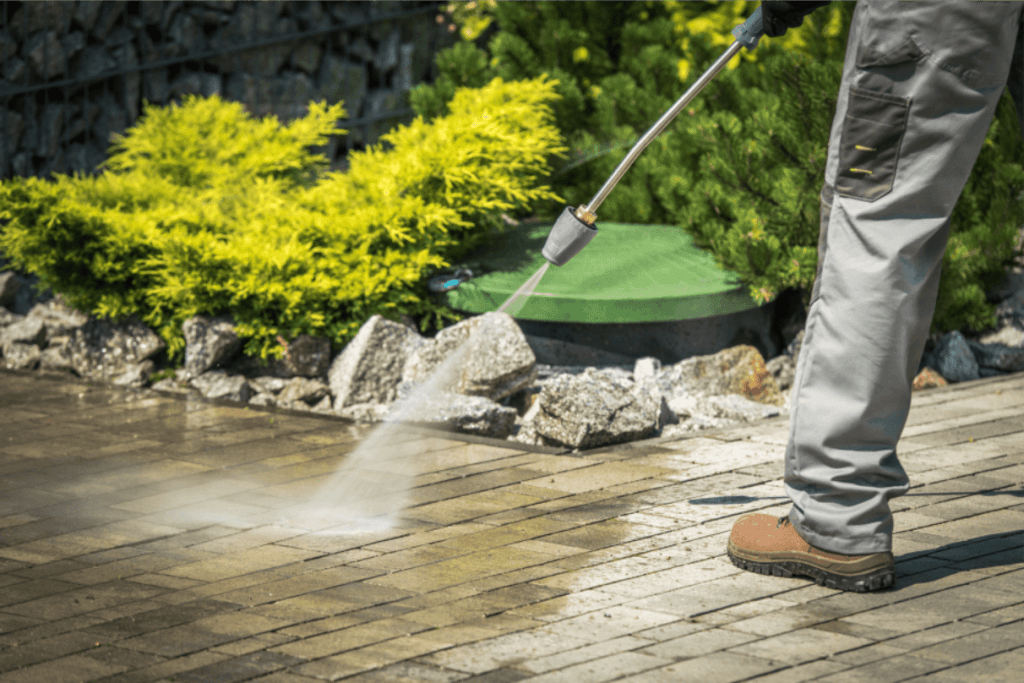
Is Flagstone Worth The Money?
Is flagstone cheaper than pavers? Yes. But is it worth the savings? The answer to that question can depend a lot on tastes and opinions.
As you can see in this article, both products are excellent and have positive features. In general, Flagstones look great (color, texture, and design) and are natural stones, so they’re as unique and unlimited as nature itself. Pavers, on the other hand, are cheaper, more durable, and easier to replace.
The final decision will be up to you. Just remember: always choose good quality material, and preferably qualified personnel, to work on your project.
At JS Brick, we have 20+ years of experience providing paver and flagstone installation, supply, and maintenance services in Sarasota and surrounding cities. For a free estimate, don’t hesitate to leave us a message or a call.

